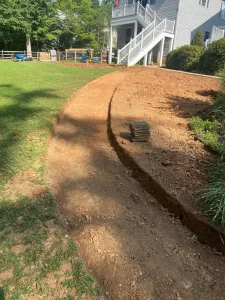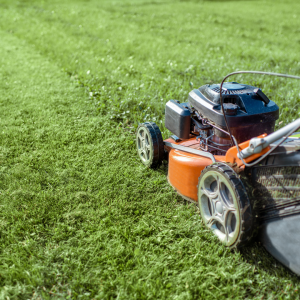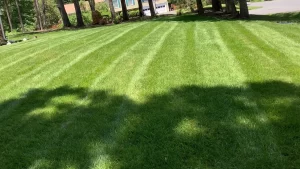In the battle against household pests, knowledge truly is power. From pesky ants infiltrating your kitchen to unwelcome spiders setting up camp in corners, the world of pest control can feel like a constant challenge. But fear not! With the right strategies and a bit of know-how, you can keep those insects at bay and reclaim your home. In this blog, we’ll delve into the realm of pest control pro tips, uncovering the secrets to maintaining a pest-free environment. From preventative measures to targeted interventions, we’ll explore effective techniques backed by science and experience. Say goodbye to unwanted critters and hello to peace of mind in your living space. Let’s dive in!
Understanding Pest Behavior: Insights into Insect Patterns
To effectively combat pests, it’s crucial to grasp their behavioral patterns. Insects operate on instincts and environmental cues, often seeking out food, water, and shelter. By understanding these tendencies, homeowners can anticipate potential infestations and take proactive measures. For instance, knowing that cockroaches are attracted to dark, damp areas can prompt sealing cracks and fixing leaks to eliminate their preferred habitats. Similarly, understanding the breeding habits of mosquitoes can inform the implementation of targeted control methods, such as removing standing water where they lay eggs. By studying insect behavior, homeowners gain valuable insights that empower them to disrupt pest cycles and maintain a pest-free environment.
Creating a Pest-Resistant Environment: Proactive Measures for Prevention
Prevention is the cornerstone of effective pest control, and creating a pest-resistant environment is paramount. This involves identifying and addressing potential entry points that pests could exploit to gain access to the home. Sealing cracks and gaps in walls, doors, and windows can help keep out pests like ants, spiders, and rodents. Additionally, maintaining proper sanitation practices, such as storing food in airtight containers and promptly cleaning up spills, deprives pests of a food source and discourages their presence. Implementing these proactive measures not only deters pests from entering the home but also reduces the need for reactive pest control measures down the line, saving homeowners time, money, and frustration.
Natural Remedies vs. Chemical Solutions: Finding the Right Balance
In the quest for pest control, homeowners often face the dilemma of choosing between natural remedies and chemical solutions. While natural remedies are appealing for their eco-friendliness and minimal impact on health, they may not always be as effective or long-lasting as chemical pesticides. Conversely, chemical solutions offer potent and immediate results but come with potential risks to human health and the environment. Finding the right balance involves assessing the severity of the infestation, considering the potential risks and benefits of each approach, and integrating both natural and chemical solutions when appropriate. For example, using diatomaceous earth for controlling crawling insects like ants and cockroaches can be a non-toxic alternative to chemical sprays, while still effectively eliminating pests.
Targeted Treatments: Effective Strategies for Specific Insect Types
When dealing with pest infestations, employing targeted treatments tailored to specific insect types is essential for effective pest control. By understanding the unique vulnerabilities and behaviors of different pests, homeowners can implement strategies that maximize efficacy while minimizing harm to non-target organisms and the environment. Here are some effective strategies for targeted treatments:
- Identification: Properly identifying the pest species is the first step in implementing targeted treatments. Different insects require different approaches for effective control.
- Traps and Baits: Deploying traps and baits designed to target specific insect species can help reduce populations without resorting to chemical pesticides.
- Insect Growth Regulators (IGRs): IGRs disrupt the growth and development of insects, preventing them from reaching maturity and reproducing, thus reducing the population over time.
- Biological Controls: Introducing natural predators or parasites that feed on the target pest can provide long-term suppression of populations without the use of chemical pesticides.
- Insecticide Treatments: When necessary, applying insecticides specifically formulated to target the pest species can effectively eliminate infestations while minimizing environmental impact.
In conclusion, targeted treatments are essential for effectively managing pest infestations. By tailoring control strategies to specific insect types, homeowners can achieve lasting results while minimizing risks to the environment and non-target organisms.
Maintenance Matters: Regular Checks and Upkeep for Long-Term Success
Consistent maintenance is key to sustaining a pest-free environment over the long term. Regular inspections of the home, both indoors and outdoors, can help identify potential pest entry points, signs of infestation, or conditions conducive to pest activity. Addressing issues promptly, such as repairing leaky pipes, clearing clutter, and trimming vegetation away from the house, can prevent minor pest problems from escalating into full-blown infestations. Additionally, routine cleaning and sanitation practices help eliminate food and water sources that attract pests, making the environment less hospitable for them. By making maintenance a priority, homeowners can stay one step ahead of pests and enjoy lasting peace of mind in their homes.
Sustainable Pest Control Practices: Eco-Friendly Approaches for a Greener Home
In today’s environmentally conscious world, sustainable pest control practices offer eco-friendly solutions for maintaining a greener home. These approaches prioritize the use of non-toxic methods and products to manage pest populations while minimizing harm to humans, pets, and the surrounding ecosystem. By integrating these practices into your pest control routine, you can effectively manage pests while contributing to a healthier planet. Here are five key sustainable pest control practices to consider:
- Biological controls: Utilize natural predators or parasites to manage pest populations without the need for chemical pesticides.
- Physical barriers: Implement screens, traps, or barriers to prevent pests from entering your home or garden.
- Plant-based repellents: Use natural repellents derived from plants to deter pests without harming the environment.
- Integrated Pest Management (IPM): Adopt a holistic approach that combines multiple strategies to target pests while minimizing environmental impact.
- Habitat modification: Make changes to your home or garden environment to reduce factors that attract pests, such as removing standing water or sealing cracks and crevices.
Incorporating these sustainable pest control practices not only helps keep your home pest-free but also contributes to a greener, more sustainable future for all. Make the switch to eco-friendly pest control methods today and do your part in protecting the planet.
Conclusion
In conclusion, understanding the behaviors of pests is essential for effective pest control. By knowing their habits and tendencies, homeowners can implement proactive measures to prevent infestations before they occur. Creating a pest-resistant environment through sealing entry points and maintaining cleanliness is crucial for long-term success in pest management. When it comes to choosing between natural remedies and chemical solutions, finding the right balance ensures both efficacy and safety. Targeted treatments tailored to specific insect types maximize effectiveness while minimizing environmental impact. Consistent maintenance and sustainable pest control practices are key to ensuring a pest-free home and a greener planet for future generations. For professional assistance in maintaining a pest-free environment, contact Precision Lawn and Landscape at 8193a Euclid Ct, Manassas Park, VA 20111 or call 703-244-64078. Take action today for a pest-free tomorrow!




